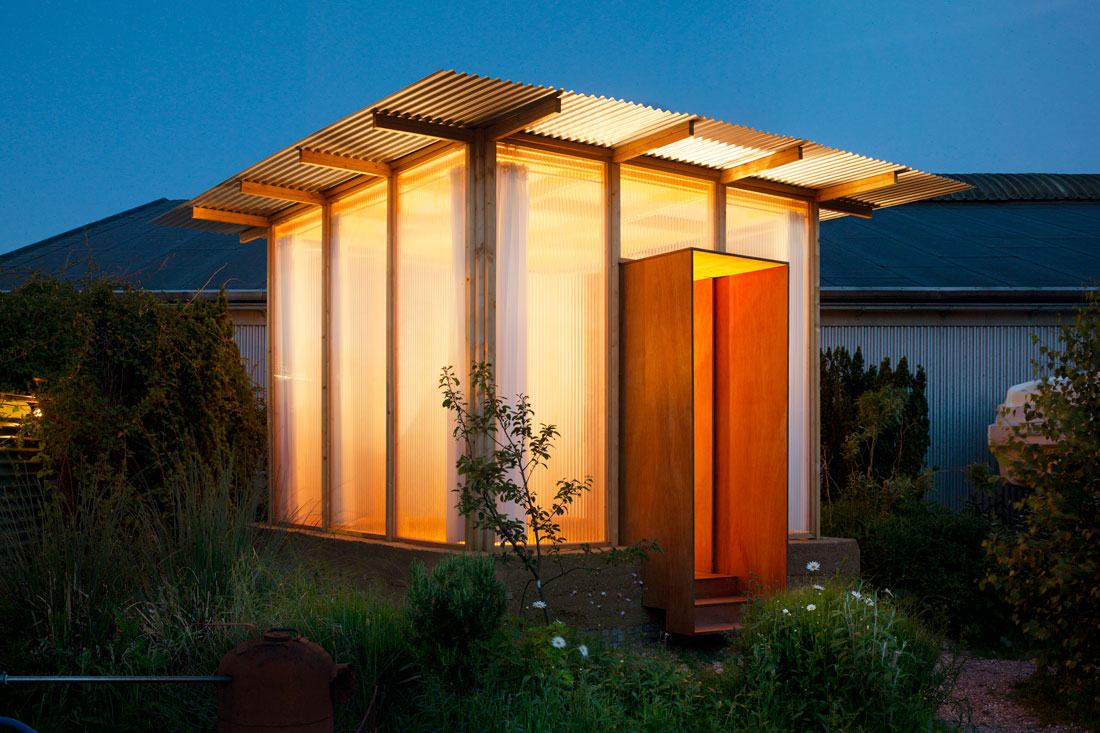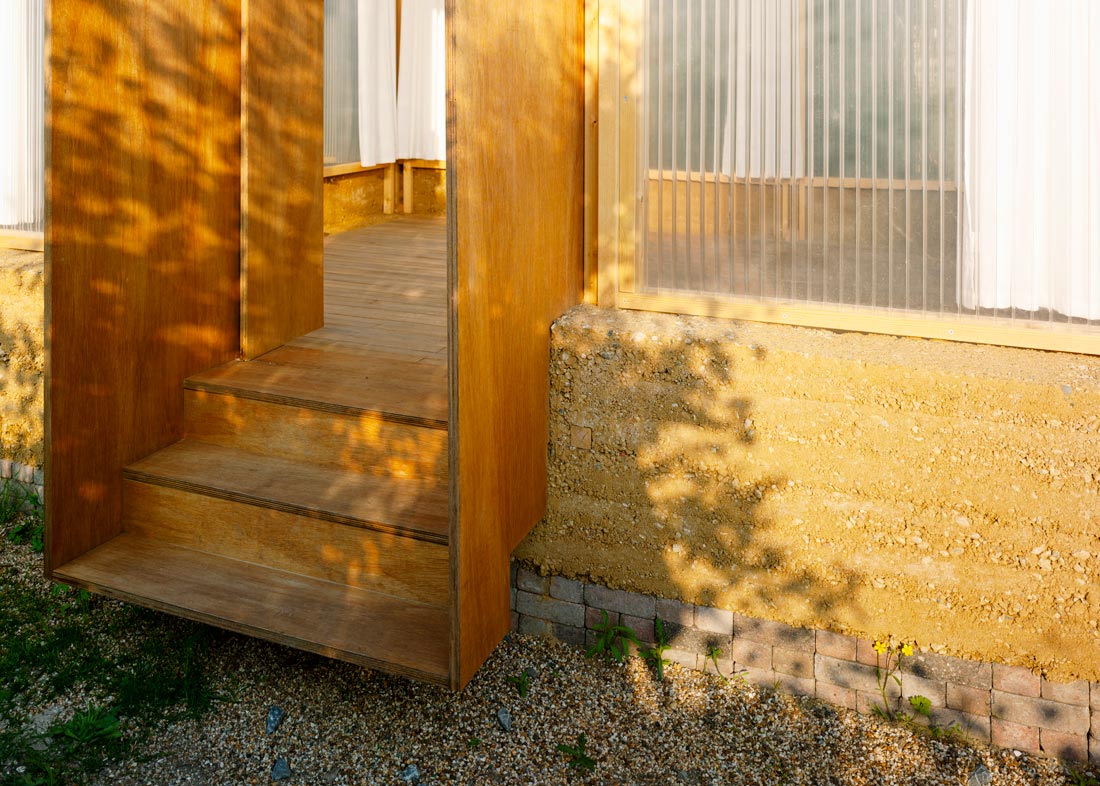This cabin is an experimental and artisanal project. Built as a temporary object, the design aims to be disassembled and recycled again. Therefore each material was already re-used, produced locally and put together using dry construction.
The cabin sits in the heart of a wild garden in Rotterdam; each element and detail is visible from both inside and outside, offering a permanent dialogue with the garden. The door is lifted off the ground and attached to the transparent cube. The rammed earth base is both a wall and a floor, combining two functions, emphasizing its archetypal form. The aluminum roof floats and reveals the timber structure and the transparency of the façade. The architecture dialogues between mass, transparency, time and durability.
The design followed a clear process that always involved hands-on detailing, from the model through to the final built object. During the construction every was designed by building a mock-up and adapting the design to the second-hand materials available. The design was envisioned as a flexible structure to accommodate any material using the same wooden section. The neutrality of the façade allows for a dialogue between nature and architecture. The aesthetic of the rammed earth base emphasizes the contrast between natural and artificial materials. The acrylic sheet can be perceived as glass, reflecting the color of the sky or showing the continuity of the structure from outside to inside. As an ensemble, this temporary object highlights the potential of circular and re-used materials.
Built with recycled rammed earth (Kastar) the walls support the entire structure. This raw material can be reused any time to build a new wall or to grow plants in the garden. The cement bricks were sourced in local gardens. The wooden floor and celling were made from the flooring of an old gymnasium. The acrylic sheet came from a chicken farm. The entrance is made from repurposed plywood. All the materials were cleaned, sanded or polished revealing their qualities and value. This cabin was self-built allowing on-site detailing.
The cabin shows that circularity can offer an aesthetic value. It demonstrates the qualities and craftsmanship of rammed earth construction and reused wood. Second-hand materials are upgraded, providing more quality than in their first use. The temporary character of the cabin is invisible, and yet the object can easily be removed and rebuilt somewhere else. It is the first time that rammed earth has been used in Rotterdam, an opportunity to demonstrate its quality and aesthetic value.
The pavilion sits in an industrial context and is directly exposed to the sea climate. The rammed earth wall will erode over the time and will highlight the monolithic character of the base. The object engages in a dialogue with living matter and the surrounding garden. Likewise, the project establishes a strong dialogue with craft and customized details. The furniture was especially designed for the pavilion using the same wooden section as the timber structure of the cabin. The cabin is a mixed-use space. It can be used as a pavilion, a sleeping cabin, a retreat space or a winter garden. Designed as a single open volume, the architecture guaranties a comfortable climate. The height offers a fantastic viewpoint and emphasizes the dialogue with the garden. Curtains offer privacy for the user. The façade dialogues with the daylight showing a changing atmosphere as the day progresses. The rammed earth base and the elevated floor offer a dry and fresh climate in every season.























